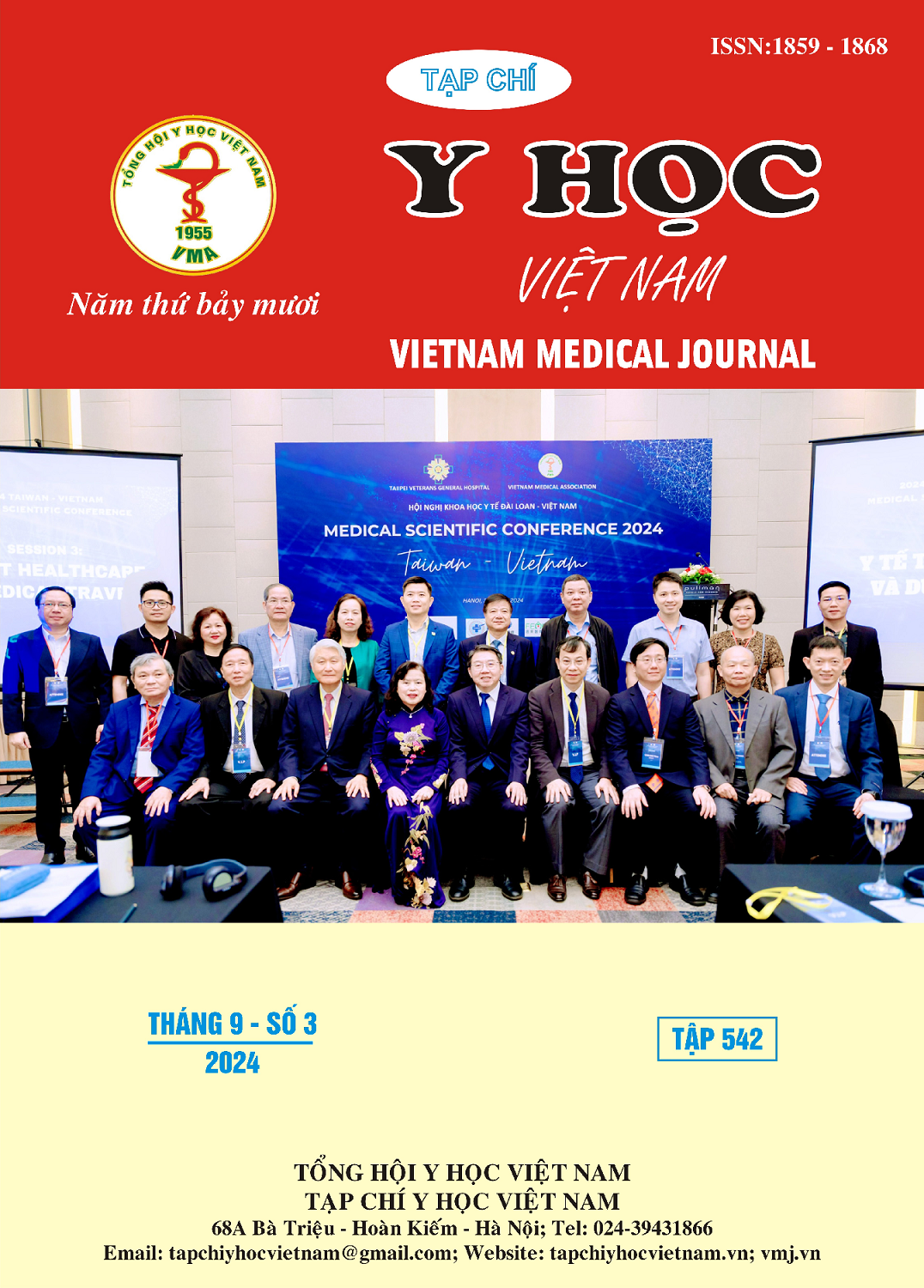EVALUATION OF THE TREATMENT OUTCOMES FOR RADIAL AND/OR ULNAR ARTERY INJURIES USING END-TO-END ANASTOMOSIS TECHNIQUE AT CAN THO CENTRAL GENERAL HOSPITAL
Main Article Content
Abstract
Background: Injuries to the radial and/or ulnar arteries are a common surgical emergency, accounting for 37.9% of peripheral vascular injuries. The blood supply to the forearm and hand region is provided by the radial and ulnar arteries. Therefore, when there is a severance of these arteries, it is necessary to perform vascular anastomosis to control bleeding and restore blood circulation. Hence, we conducted a study titled “Evaluation of the Treatment Outcomes for Radial and/or Ulnar Artery Injuries Using End-to-End Anastomosis Technique” at Can Tho Central General Hospital. Materials and methods: This is a prospective cross-sectional study on patients with forearm wounds involving the radial and ulnar arteries. The diagnosis was confirmed by clinical and paraclinical signs. Treatment was carried out using the end-to-end anastomosis technique. Data were analyzed using SPSS 27 software. Results: A total of 41 patients with forearm wounds involving the radial and ulnar arteries were treated using the end-to-end anastomosis technique. Among these, isolated radial artery injuries accounted for 31.7%, ulnar artery injuries for 43.9%, and injuries to both the radial and ulnar arteries for 24.4%. The average age was 36.00 ± 13.56 years, with 92.7% being male and 7.3% female. The average time from injury to treatment was 6.91 ± 2.54 hours. The success rate of anastomosis was 97.6%, with postoperative thrombosis occurring in 17.1% of cases. Most patients showed clinical improvement after surgery, with only one case recorded of acute limb ischemia postoperatively. Conclusion: Injury to the radial and/or ulnar arteries is a vascular injury that requires early surgical intervention using vascular anastomosis techniques to achieve favorable outcomes and restore function to the forearm and hand. This approach helps prevent ischemic complications and loss of function that could lead to disability, or even partial amputation of the limb.
Article Details
Keywords
radial arterial injury, ulnar arterial injury, revascularization, end-to-end anastomosis.
References
2. Đ.Q. Hưng, N.V. Đại, M.N. Thế (2020), “Chấn thương, vết thương động mạch ngoại vi: Hình thái tổn thương và kết quả điều trị tại Bệnh viện Việt Đức”, Tạp chí Phẫu thuật Tim mạch và Lồng ngực Việt Nam, 16, 8-13. https://doi.org/ 10.47972/vjcts.v16i.133
3. Demirdover C., Ozturk F.A., Yazgan H.S., Yogurtcu N., Sevindik M., et al. (2018), “Surgical treatment and functional outcomes of multicomponent soft tissue injuries of the wrist”. Hand Surg Rehabil, 37(3), 160-166. https://doi.org/10.1016/j.hansur.2018.02.001
4. Wang F., Zhang R., Liu S., Ruan H., Xu J., et al. (2022), “Severe spaghetti wrist injury: Should we expand the terminology from wrist to proximal forearm?”. Joint Diseases and Related Surgery, 33(2), 273. https://doi.org/10.52312% 2Fjdrs.2022.652
5. P.T. Đạt, P.V. Cương, Đ.T. Thành (2022), “Kết quả phẫu thuật vết thương động mạch chi trên tại Bệnh viện Đa khoa tỉnh Thái Bình”, Tạp chí Y Dược Thái Bình, 3(16), 85-91. https://thaibinh jmp.vn/index.php/ojstbump/article/view/213
6. Bot G.M., Zhao X., McElenney B.K., Meybodi A.T., Belykh E., et al. (2020), “Comparative analysis of continuous suturing, interrupted suturing, and cyanoacrylate-based lid techniques for end-to-end microvascular anastomosis”. World neurosurgery, 134, 465-471. https://doi.org/ 10.1016/j.wneu.2019.11.054
7. Cagnolati A.F., Andrade F.R., Serrano S.D.C., Barbieri C.H., Mazzer N., et al. (2022), “Evaluations of Repaired Artery Patency in Forearm Wounds Using the Allen Test, Handheld Doppler and Doppler Ultrasonography”, Revista Brasileira de Ortopedia, 57, 455-461. https://doi.org/10.1055/s-0041-1729574
8. P.V. Cương (2008), Nghiên cứu đặc điểm lâm sàng và kết quả điều trị phẫu thuật tổn thương động mạch chi trên tại Bệnh viện Việt Đức, Trường Đại học Y Hà Nội, 72


